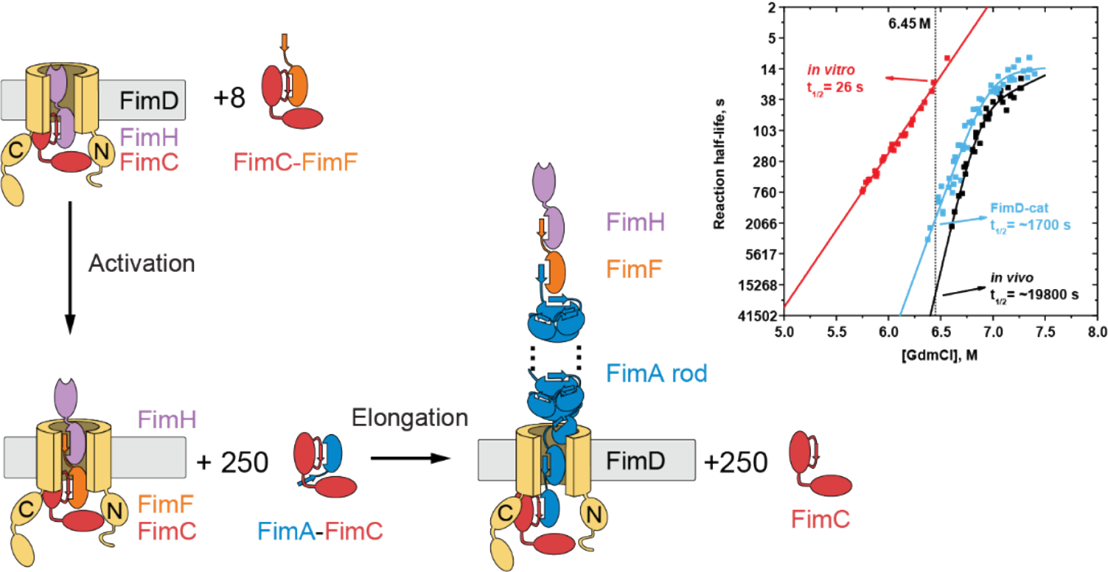Assembly platform FimD ensures most stable quaternary structure formation of type 1 pili
In a "Nature Communications" article, the Glockshuber (IMBB), Hospenthal (IMBB), Waksman (UCL and Birkbeck, UK), Meier (LPC, D-CHAB) and Wiegand (RWTH Aachen University, Germany) groups, show that the assembly platform FimD is required to assemble the most stable quaternary structure of type 1 pili.

Uropathogenic Escherichia coli use so-called type 1 pili to attach to epithelial cells in the bladder during urinary tract infections. FimA, the main structural subunit of type 1 pili, assembles into a superhelical right-handed rod structure. In vivo, pilus rods are assembled by the assembly platform FimD, but previous research has demonstrated that FimA can also self-assemble into pilus rods in vitro, albeit much slower. Interestingly, in vitro-assembled structures display up to 1000x lower kinetic stability against dissociation when compared to their in vivo-assembled counterparts.
In this study, researchers used various methods including circular dichroism, cryo-EM, solid-state NMR, and analytical size exclusion chromatography to find explanations for these differences. When FimD was present during in vitro assembly, the stability of pilus rods was restored to levels close to those of in vivo-assembled rods. While cryo-EM structures of the differently assembled rods showed no major differences, solid-state NMR revealed structural defects in the in vitro-assembled pili. In addition, in vitro-assembled pili rapidly fragmented before fully unfolding when exposed to denaturant. Therefore, the authors hypothesized that in vitro-assembled pilus rods contain structural defects or weak spots that destabilise the pilus rod structure.
Altogether, the results of this study suggest that FimD not only catalyses pilus assembly, but it also guides subunit assembly into a structurally homogenous rod, without defects, and is therefore crucial to form the most stable quaternary structure.
Link to the paper in external page "Nature Communications".